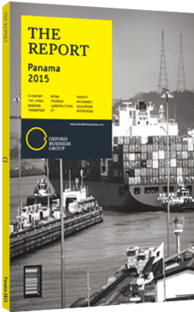Profitability has taken a hit due to soaring claims costs in Panama
In terms of premiums, the country’s insurance sector has been growing consistently since 2009. However, by some measures, profitability has been falling. According to Panama’s insurance trade association, Asociación Panameña de Aseguradores (APADEA), technical profits (i.e., the earnings from underwriting of risks) totalled $13.5m in 2013, while in the first nine months of 2014 they were $8.4m. Given the rise in gross written premiums, the technical margin (technical profits as a percentage of gross written premiums) dropped from a peak of 3.5% in 2010 to 1.6% in the first three quarters of 2014. Put another way, the combined ratio is 98.4%.
A Jump in Claims
A major problem has been soaring motor vehicle claims costs. Claims have risen from $81m in 2010 to $142m in 2014. The claims cost ratio (i.e. claims as a percentage of premiums written) has jumped from 49.5% to 60.5%, while the average cost per claim has nearly doubled, increasing from $522 to $1000. The insurers have not made a technical profit since 2010. Fraudulent claims have also contributed to insurers’ woes.
These figures indicate that insurers do not have the pricing power to pass on higher claims costs to their customers. APADEA notes that, in 1989, a Toyota Corolla cost around $9000 and the annual premiums to insure the car were $546. In 2014, a comparable car cost $21,500 and the annual premiums to insure it were $587.
Trends in relation to other lines have also been unfavourable. Health insurance claims have risen from just under $100m in 2010 to $153m in 2014. The claims cost ratio fell from 69.5 in 2010 to 64.1 in 2013, but rebounded to 68.5% in 2014. The insurers have only made a technical profit in three of the last five years. In relation to fire and allied risks, the claims cost ratio was 154% in 2011 and 103% in 2013. In 2014 the claims cost ratio fell to 41%. This is the result of the insurers successfully applying pressure to their clients to take measures to reduce years. Motor vehicle claims the risk and impact of fire. However, the line is still unprofitable. 2010 was the last calendar year in which the insurers made a technical profit from fire and allied risks. A number of fires in the Colón Free Zone caused the average cost of claims for fire and allied risks to soar from $15,239 in 2012 to $33,656 in 2013. APADEA sees the growth of the Colón Free Zone as a source of potential new income. However, it is also alert to the risks of additional major claims from fires at industrial premises.
Only a small minority of Panama’s insurers are profitable. These are mainly bank-linked insurance companies which are able to sell credit insurance, home and contents insurance, and mortgage insurance to customers who are buying other products.
In theory, the regulator, Superintendency of Insurance and Reinsurance of Panama ( Superintendencia de Seguros y Reaseguros de Panamá, SSRP) could apply pressure on the insurers to take steps to improve profitability in the motor vehicle, health and fire and allied risks business. However, in practice, the SSRP is under-staffed and is competing for suitably skilled personnel with Panama’s insurance companies, which are generally able to offer better pay and conditions to employees.
Other Challenges
Another challenge that the country’s insurers face is that brokerage commissions in Panama are among the highest in Latin America, if not the world. Typically, commissions paid to insurance brokers amount to approximately 19% of gross written premiums. Other special incentives that are provided to brokers are included in the insurers’ costs of acquiring business. In essence, the brokers (and especially the larger ones) have pricing power relative to the insurance companies.
Insurers’ search for profitability could result in a wave of mergers and acquisitions in the coming years. In addition, these mergers should also reduce another issue, which is the high turnover of, and general shortage of, suitably qualified people.
You have reached the limit of premium articles you can view for free.
Choose from the options below to purchase print or digital editions of our Reports. You can also purchase a website subscription giving you unlimited access to all of our Reports online for 12 months.
If you have already purchased this Report or have a website subscription, please login to continue.

